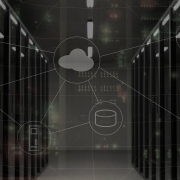It’s been a decade since Cisco announced “Project California” in March of 2009, launched the following year as the Unified Computing System (UCS) platform. This bold entry into the enterprise server market was met – at first – with a combination of skepticism and bewilderment.
But within five years of its launch, Cisco had overtaken HP as the top blade server vendor. In 2014, Forrester praised the product line as a “successful disruption and a new status quo”. So how did a total newcomer blow all its competition out of the water and rise to the ranks of industry standard?
The Quest for Server Automation
When it comes to the space for server blades, HP had the leg up for some time – in 2005, it acquired the patent for commercial blade architecture from its purchase of RLX Systems. In 2009 – the same year that Cisco announced Project California – it released the BladeSystem Matrix, its attempt to create true data center automation.
With the aid of VMware, HP’s Matrix allowed administrators to configure server blades through software-defined templates which could be duplicated and used to configure new ones quickly.
This early effort to manage and provision servers through code is an example of Infrastructure as Code (IaC), defined well by InfoWorld contributor Paul Venezia in a commentary published that year:
“The ideal of divorcing services from hardware and pushing server management away from the physical layer…”
After testing Matrix, Venezia concluded it had some ways to go, and in another article concluded:
“The setup and initial configuration of the Matrix product is not for the faint of heart. You must know your way around all the products quite well and be able to provide an adequate framework for the Matrix layer to function”
A server technology that really lived up to the ambitions of automation seemed to be some ways down the road – until, that is, the launch of UCS.
What is Unified Computing?
While Matrix had retained traditional hardware with a virtualized software layer, Cisco defined a new approach to server architecture specifically designed to support abstraction by merging network, storage and memory traffic in “fabrics”.
The approach – often referred to as “converged” or “fabric” computing – took automation the rest of the way to a truly agile, centrally managed and scalable server infrastructure. Early comparisons with Matrix revealed a massive reduction in the complexity which Venezia commented on – deploying a 2-blade system with UCS took 28 fewer steps.

Today, Cisco’s UCS platform remains the standard for enterprise fabric computing. Here are five ways that UCS adoption transforms a standard data center:
- Single Pane of Glass
In some industries, “single pane of glass” management is still a buzzword. For UCS, it’s a reality: with the UCS Manager, organizations can
- Manage and configure up to one thousand UCS (and now HyperFlex) products from a single pane
- View and altar server configurations from CPU to memory across the enterprise
- Centrally monitor memory, power supply and temperature errors in real-time
- View all server incidents and alerts from a single location
For server administrators, centralized control provides reduced time to service (TTS), significantly fewer redundant processes, and a better top-down view of a data center’s daily operations.
- Programmability
The ability to manage servers through code is likely the most recognizable feature of the UCS ecosystem. Besides enabling fast deployment of new server configurations, IaC provides numerous advantages:
- Eliminates configuration drift, facilitating easier, standardized development and continuous delivery
- Reduced total cost of ownership (TCO) through automation
- Through the UCS Platform Emulator, companies can develop applications for various systems without investing in physical hardware
When it comes to hardware virtualization, the sky is the limit in terms of development and deployment. While Cisco is not the first to offer virtualization, it is by far the best commercial networking platform developed specifically for that purpose.
- Ease of Migration
Migrating, configuring and deploying new servers is a time-consuming process; in traditional data centers, removing and re-configuring old servers can interfere with or even halt operations.
UCS elegantly resolves these issues by allowing an administrator to:
- Transfer a service profile from one domain to another all from the management UI
- Rapidly migrate data between servers in less than an hour
- Pre-configure and test power, network and storage settings with minimal impact on the end user
With server pooling, grouped machines can even be configured with the push of a button, eliminating much of the grunt work involved with setting up new workflows and configurations.
- Fast Recovery for Hardware Failure
As a corollary of easy configuration and deployment, UCS allows server profiles to be easily swapped in the case of a hardware failure. Moreover, the Cisco blade chassis provides a nearly plug-and-play experience for replacing broken equipment.
With server pooling and automation rules, UCS can even re-deploy a failed server profile without user intervention, saving a data center on resources and precious downtime.
Conclusion
The sheer number of expanded capabilities provided by UCS are a testament to the innovation behind its core features. Simply put, fabric architecture offers server admins the ability to utilize any hardware resources any way they want.
While the future may hold even further convergence in networking infrastructure, for now we think UCS fulfills the ideal Venezia articulated ten years ago: if it can be imagined and programmed – with UCS – it can be done.
Professional Cisco Support in Northern Virginia
Located near the booming data center corridor in Loudon County, VA, Digital Tech Inc provides rapid response maintenance services including EOSL extension, spare parts, short- and long-term maintenance agreements, migration assistance and depot repair options. Our skilled engineers offer multi-vendor support, covering IBM, HP, Dell EMC, Cisco, NetApp, and many more.
To learn more, contact us today.





